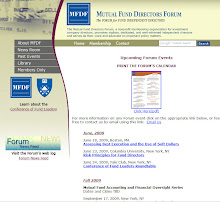First, Brigagliano discussed the need for market structures to be altered to accommodate non-listed financial products.
When it comes to managing financial risks, there truly is no substitute for financial products traded in transparent markets capable of generating price discovery that properly incorporates the risk of those products. Reliable markets with good prices enable all interested parties - from traders to clearing entities to regulators - to appreciate financial risks and act accordingly to protect themselves and the broader financial system.Brigagliano told his audience that the Commission and the SROs are considering several options for giving previously unlisted products access to formal exchanges, including "sponsored access," while remaining cognizant of the risks involved when trading firms have unfiltered access to the markets.
. . .
Indeed, the securities markets have thrived as competitive forces have led entrepreneurial industry participants to innovate with new technologies and new trading tools. So the challenge for the industry and regulators is to monitor these changes and update a market's structure when needed.
These risks can affect many of the participants in a market structure, including the trader's broker, the exchanges, and the clearing entities. Ultimately, the risks can affect the integrity of the market structure itself. To address these risks, the Commission staff has worked with the SROs to develop a consistent approach to sponsored access.
. . .
I believe we have learned that dangerous financial risk conditions must not be ignored, even when they may appear difficult to resolve. Although it may be difficult or even impossible to foresee the particular event that triggers a systemic threat, the conditions that create a potential for such a threat often are foreseeable. With respect to sponsored access, the Nasdaq proposal and the views of commenters have greatly contributed to a better understanding of important issues among the industry and regulators. I believe that this improved understanding will pay off as sponsored access is addressed in the coming months.Briagliano next discussed some of the ongoing concerns regulators have regarding "dark pools," including transparency, fragmentation, and fair access. He did emphasize, however, that "the staff certainly has not reached any conclusions on whether a regulatory response is needed or, if so, what sort of response would be appropriate." Despite the recent decline in their trading volume, dark pools remain a concern, however.
Trading volume
Over the last year, dark pools, which do not display public quotes, appear to have increased their percentage share of total trading volume in US-listed stocks, though that growth seems to have leveled off recently. Time will tell whether dark pool volume growth in fact has slowed permanently, or whether this is merely a temporary interlude due to unusual trading conditions since September 2008. I should note that the percentage of volume at other types of dark trading venues, such as OTC market makers, may have increased in recent months.
Transparency
In deciding whether or how to address this matter, one issue to consider is whether there is any compelling reason for dark pools to object to improved post-trade transparency. While full pre-trade darkness is an important element of the business model of some dark pools, it does not appear that some form of improved post-trade transparency would be likely to interfere with their business models. Indeed, uniform and reliable trade reporting practices could help establish a fairer playing field because those dark pools that report their volume accurately would not be disadvantaged in comparison with any that might inflate their volume.
Fragmentation and Fair AccessThe full text of Mr. Brigagliano's May 20, 2009 address is available at: http://www.sec.gov/news/speech/2009/spch052009jab.htm
To the extent desirable order flow is diverted from the public markets, it potentially could adversely affect the execution quality of those market participants who display their orders in the public markets. The concern here is that any practice that significantly detracts from the incentives to display liquidity in the public markets could decrease that liquidity and, in turn, harm price discovery and worsen short-term volatility.





